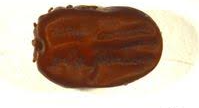
Stolen Greek and Roman items are being traced for a new exhibition, yet the museum admits many artefacts may never fully recover.
The British Museum is optimistic about recovering stolen items, but officials acknowledge that even if the artefacts are returned, the damage caused by the thefts will result in a long-term loss. A new exhibition, Rediscovering Gems, will display some of the recovered artefacts, including classical Greek and Roman items, many of which had been stolen and later tracked down.
In August, the museum shocked the world by revealing that nearly 2,000 artefacts had been stolen or damaged, with the thefts linked to a staff member who was later dismissed. As the recovery effort continues, the museum has managed to recover 357 items from six collectors. Tom Harrison, keeper of the museum’s Greece and Rome department, described the process as “painstaking” and “very slow,” as the stolen artefacts are “very widely scattered” around the globe.
The museum has expressed gratitude for the support it has received from dealers who have helped trace the missing items. However, Harrison cautioned that even if all the stolen objects are recovered, there will be an inevitable “net loss,” due to damage such as the removal of gold mounts from artefacts, which have caused irreversible harm to some pieces. He pointed out that while some items can be restored, others will remain damaged beyond repair.
Five months after the thefts were made public, Harrison acknowledged that the museum’s staff remained “optimistic,” but he also recognised the significant impact the incident had, which included the resignation of the museum’s director, Hartwig Fischer. Harrison also stressed the importance of improved documentation for the museum’s collection, which has been strengthened by the recovery process.
The museum is also showcasing gems that were once part of a scandal involving the sale of forgeries in the 19th century. Claudia Wagner, a senior research associate in gems at the museum, highlighted how these engraved gems, once popular in the 18th century, were crucial in identifying symbols of power in the ancient Roman era. She compared the significance of these gems to modern political symbols like the “Make America Great Again” hat, stating that they were tools of “propaganda.”
Rediscovering Gems will be open to the public until June 15 at the British Museum, where visitors can explore both the recovered artefacts and others of a similar nature used in Roman society for sealing documents and decoration.











